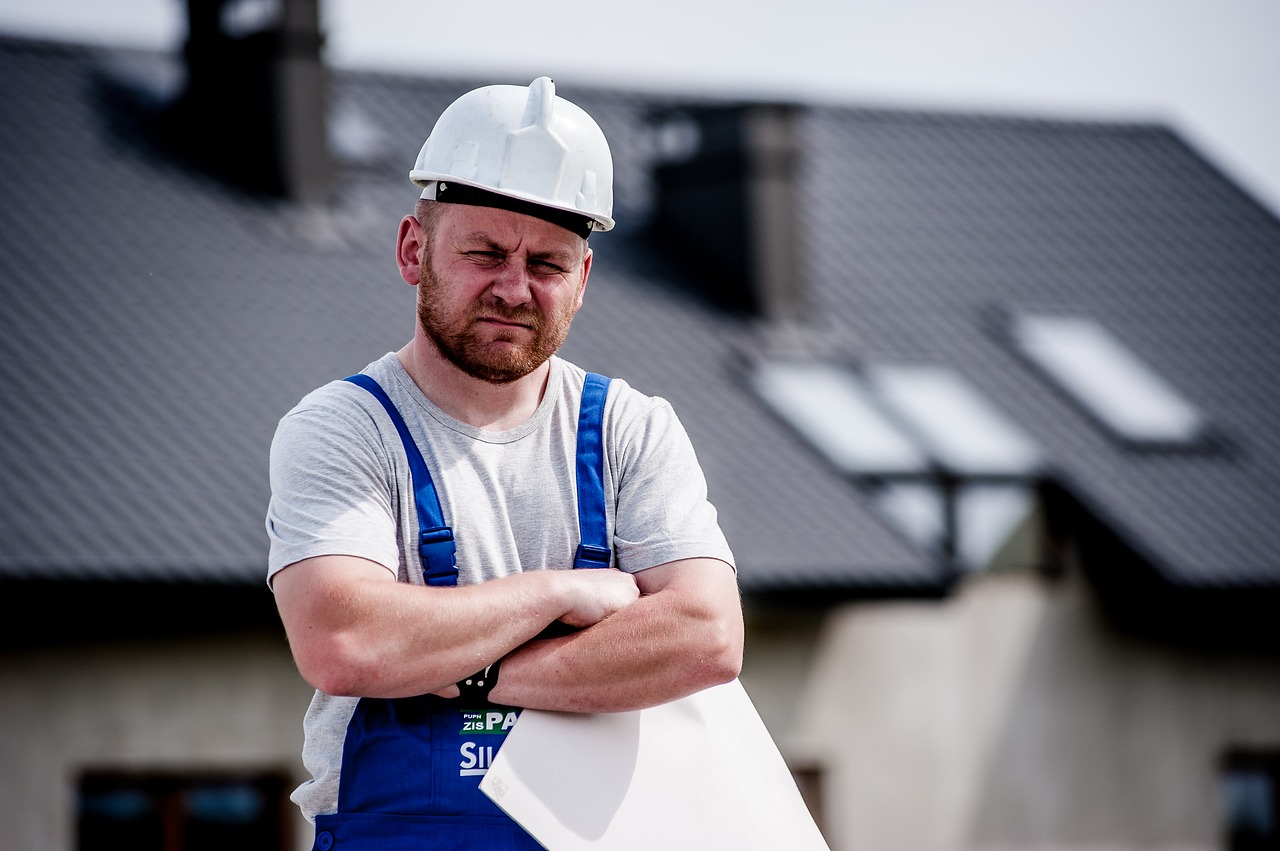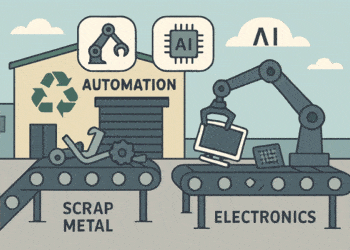When people think about Fortune 500 companies, they picture sprawling headquarters, massive marketing budgets, and a web presence so polished it practically glows. But here’s the thing—those sleek, high-performing websites that bring in millions (sometimes billions) in revenue? They aren’t just about deep pockets and fancy design. They’re built on principles, strategies, and technical optimizations that any business—yes, even small businesses in Charlotte, North Carolina—can apply.
At Above Bits, we’ve spent almost two decades working with businesses of all sizes, from startups to enterprises, and we’ve seen firsthand what sets Fortune 500 web design apart from the average small business site. Spoiler alert: it’s not about throwing money at the problem. It’s about understanding what works, what scales, and what keeps people coming back.
So, let’s break it down—what do Fortune 500 companies know about web design that small businesses often overlook? And more importantly, how can you apply those same principles to web design in Charlotte to grow your business?
Fortune 500 Websites Aren’t Just “Pretty”—They’re Engineered to Perform
One of the small businesses’ biggest misconceptions is that web design is about aesthetics. Don’t get me wrong—good design matters. No one trusts a website that looks like it was built in 2009 using Microsoft FrontPage. However, Fortune 500 companies don’t focus on design in a vacuum. Every layout, button, and interaction is meticulously engineered for conversions, speed, and engagement.
Take Amazon, for example. Their homepage is not winning minimalist design awards, yet it rakes in billions. Why? Because every pixel is there for a reason. Every product suggestion, every call-to-action, every element has been A/B tested to death to ensure it nudges users toward making a purchase.
This is where small businesses often drop the ball. They get obsessed with how their website looks but completely forget about how it functions. I can’t tell you how many business owners in Charlotte have come to Above Bits asking for an eye-catching redesign, only to neglect basic things like page speed optimization, user-friendly navigation, or mobile responsiveness.
And let’s talk about speed for a second—because if your website takes longer than three seconds to load, most visitors will leave. Google has confirmed that a one-second delay in page speed can drop conversion rates by 7%. Fortune 500 companies know this, so they invest in CDNs (Content Delivery Networks), compressed assets, and high-performance hosting solutions to ensure their sites load almost instantly.
Meanwhile, small businesses often settle for budget-shared hosting, slow WordPress themes overloaded with plugins, and massive image files that could be printed on a billboard. It must be fast if you want a site that converts like the big players.
Data-Driven Design: The Secret Behind Big Business Success
Another big difference between Fortune 500 and small business sites is data-driven decision-making.
Big companies don’t just launch a website and hope for the best. They constantly track heatmaps, session recordings, and user interactions to determine where people are clicking, where they’re dropping off, and what’s keeping them engaged. Tools like Google Analytics, Hotjar, and Crazy Egg provide deep insights into user behavior, allowing them to tweak and optimize their websites in real time.
Small businesses, on the other hand? Many don’t even have basic tracking installed. I’ve seen companies in Charlotte, North Carolina, spend thousands of dollars on a website only to have zero analytics set up to measure whether it’s working.
It’s like throwing darts in the dark—you have no idea if your site is helping your business or actively hurting it.
SEO Is Built-In, Not an Afterthought
Fortune 500 companies don’t launch websites without a rock-solid SEO strategy. They understand that ranking on Google is not about stuffing keywords into every paragraph. It’s about structuring the site correctly, using clean code, optimizing page speed, ensuring mobile usability, and acquiring high-quality backlinks.
Take Apple, for example. Every product page is SEO-optimized from the ground up. The URLs are clean, the metadata is perfectly crafted, and the content is structured so search engines (and users) can easily digest it.
Now, contrast that with the average small business website. Many are riddled with SEO mistakes—broken links, missing alt text on images, duplicate content, and pages that take forever to load. Google penalizes these issues, which means you’re burying your website in search results before it even has a chance.
For businesses competing in web design in Charlotte, where local SEO is crucial, ignoring SEO is like willingly cutting your visibility. Fortune 500 companies don’t leave SEO to chance, and neither should you.
Mobile Optimization is Non-Negotiable
It’s 2024, and over 60% of all web traffic comes from mobile devices. You’re losing customers if your website doesn’t function flawlessly on a smartphone.
Fortune 500 companies optimize everything for mobile, from page speed to layout. They use progressive web apps (PWAs), AMP (Accelerated Mobile Pages), and touch-friendly navigation to ensure users have a seamless experience.
Meanwhile, many small businesses still use outdated, unresponsive sites that require pinch-zooming and awkward scrolling. If customers have to browse your site on their phones, they won’t stay.
Google knows this, too. In 2021, they officially switched to mobile-first indexing, meaning your rankings will suffer if your site isn’t optimized for mobile.
A poorly optimized mobile experience can distinguish between success and failure for companies in Charlotte, North Carolina, where competition is tight.
Security Matters More Than Ever
Cybersecurity is no joke, and Fortune 500 companies take it very seriously. Data breaches can cost millions, so big businesses encrypt everything, require multi-factor authentication, and harden their servers against attacks.
Small businesses, unfortunately, often think they’re too small to be targeted—which couldn’t be further from the truth. 43% of cyberattacks target small businesses, and many never recover from the damage.
At Above Bits, we implement secure coding practices, SSL encryption, and regular security audits for every website we build. If your website isn’t safe, you are putting your business at risk, and Google will rank you lower.
The Psychology of Trust: Why Big Brands Invest in User Experience
One thing Fortune 500 companies understand better than most small businesses is the psychology of trust in web design. Trust isn’t just about having a sleek logo or professional photos—it’s built into every user interaction with your website. If a visitor lands on your site and something feels “off,” whether it’s slow loading times, clunky navigation, or outdated design, they’re gone. Worse, they’ll likely assume your business is as unreliable as your website.
Think about PayPal. Their entire business model revolves around trust. The moment you land on their website, it feels secure. Clear call-to-action buttons, straightforward navigation, and the reassurance of encryption icons all work together to subconsciously tell users, “This is a safe place to conduct business.”
On the flip side, I’ve seen plenty of small businesses in Charlotte, North Carolina, with websites that scream “SCAM” even when they’re legitimate. Common mistakes include pixelated images, sketchy stock photos, and, worst of all, missing security certificates. If a user lands on your website and their browser warns them with “Not Secure,” they’re closing that tab faster than you can say “lost customer.”
This isn’t just anecdotal. A Stanford study found that 75% of people judge a business’s credibility based on its website design alone. That means a bad website doesn’t just cost you conversions—it actively damages your brand’s reputation. And once a customer associates you with a bad experience, winning them back is an uphill battle.
Above Bits knows this because we’ve worked with businesses across industries, ensuring that their websites look great and inspire confidence. Whether through seamless navigation, mobile-friendly layouts, or clear, professional branding, the difference between a Fortune 500 website and a struggling business often comes down to how trustworthy the site feels.
The Hidden Costs of Poor Web Design: What Small Businesses Don’t Consider
Most small businesses think a website is a one-time expense. Pay a designer, launch it, and forget about it, right? Wrong. A bad website costs more over time than investing in a good one from the start.
Let’s talk about bounce rates. Visitors will leave without converting if your website is outdated, slow, or confusing. According to a study by Akamai, a two-second delay in page load time increases bounce rates by 103%. If you’re running ads to drive traffic to your site, you’re throwing money away if users leave before they even engage.
Then there’s maintenance costs. Small businesses often go the “cheapest” route when building a site, using free templates and overloaded WordPress themes. The problem? These sites break—a lot. Unoptimized themes require constant fixes, slow load times cause frustration, and outdated plugins make you vulnerable to security breaches. Eventually, you’ll need to pay for a complete rebuild, costing far more than if you had invested in a proper, scalable design.
Big companies, on the other hand, think long-term. They invest in scalable platforms, premium hosting, and well-optimized code that can grow with their business. They also plan for future-proofing—meaning their sites are designed to handle increased traffic, new features, and security updates without needing major overhauls every two years.
I once worked with a business in Charlotte, North Carolina, that had built its e-commerce store on a free website builder. It worked fine when they were making 10-15 sales per week. But when demand spiked, the platform couldn’t handle the traffic, checkout failures became rampant, and they lost thousands of dollars in sales. They ended up paying for a new website on Shopify, a transition that could have been avoided had they chosen the proper infrastructure.
This is why web design in Charlotte should never be about cutting corners. A cheap, poorly built website will cost you more in lost customers, fixes, and migrations than a well-designed site ever will.
The Role of AI and Automation: How Fortune 500 Companies Stay Ahead
The next frontier in web design isn’t just how a site looks—how it adapts. Big companies leverage AI and automation to create personalized, data-driven experiences that small businesses overlook.
Take Netflix, for example. Its homepage isn’t static—it changes based on user behavior. The thumbnails, recommendations, and even the order of content shift dynamically to increase engagement. Imagine if your business website could do the same—showing custom content to returning customers, personalized product recommendations, or real-time chatbot support.
Small businesses in Charlotte, North Carolina, might think AI is only for tech giants, but that’s no longer true. AI-powered chatbots, recommendation engines, and automated SEO optimizations are now affordable and accessible. Platforms like ChatGPT for customer service, Google’s AI-driven search ranking tools, and Shopify’s AI-powered shopping suggestions allow businesses of any size to create more brilliant, more engaging experiences.
But AI isn’t perfect. Many businesses have rushed into automation without adequately testing it, leading to embarrassing failures. Remember when Microsoft’s AI chatbot Tay had to be shut down in less than 24 hours because it started posting offensive content? AI can be powerful but needs careful implementation to avoid frustrating users.
At Above Bits, we integrate intelligent automation to enhance—rather than replace—the human experience. Whether using AI-driven site searches, dynamic content recommendations, or automated SEO audits, our goal is always to make websites work smarter, not harder.
Small businesses can stay ahead by embracing these innovations instead of waiting until they become standard. AI isn’t just a trend—it’s the future of web design. Businesses that start integrating intelligent automation today will dominate their industries tomorrow.
Fortune 500 Design on a Small Business Budget
What separates Fortune 500 and small business websites isn’t just money—strategy. Big businesses know that a high-performing website isn’t an expense—it’s an investment that drives growth, conversions, and long-term success.
Small businesses in Charlotte, North Carolina, can implement these same principles—fast loading speeds, SEO-friendly architecture, user trust psychology, scalable design, and AI-driven automation—without spending millions.
At Above Bits, we bring big-business web strategies to small-business budgets, ensuring that every site we build doesn’t just look great but performs like a Fortune 500 website. If your business is ready to stop playing catch-up and start leading, it’s time to rethink your web strategy.
Get a Website That Works
If your website isn’t fast, mobile-optimized, secure, and SEO-friendly, you’re leaving money on the table. Don’t let a poorly designed site hold your business back.
At Above Bits, we build websites that perform, taking cues from the best Fortune 500 companies while keeping things affordable for small businesses. Let’s talk if you’re ready for a site that drives actual results. Because the best investment you can make today isn’t just a website—it’s a website that works.







